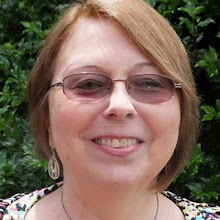Teachers reached their one-room schoolhouses by foot, on horseback, by horse and carriage or bicycle and later by car. The schoolhouse typically held anywhere from 10 to 20 kids in grades one through eight. The students seldom went to school beyond eighth grade. Instead, they worked on their parents’ farm where in central Pennsylvania agriculture was prominent. The school building was heated with a coal or wood stove and outhouses meant students had to trek out in the cold in the winter.
Students sat in desks according to their grade. While the teacher was responsible for teaching all levels often times the other grades were given work to do or were asked to sit and listen to whatever lesson was being taught. This was a good way for the younger children to learn lessons they would be taught later as they moved up to the next grade.
By the 1930s women made up the majority if school teachers, often younger woman who lived with a family where room and board became part of their salaries. Monthly stipends for teachers were relatively small. Aside from teaching, the teacher often tended to the stove and asked students to help carry firewood and a bucket of drinking water. Older students may have also helped to empty ashes from the wood stove, sweep the floors or help a younger child struggling with a lesson.
How do you think you would have liked being a teacher in a one-room schoolhouse?
Subscribe to:
Post Comments (Atom)
Benjy and the County Fair II
I am so happy and proud to announce that I have been offered a contract for my second Benjy book, Benjy and the County Fair. While it is a s...
-
If you were a student in the 1930s attending a one-room schoolhouse, you’d want to behave well. Teachers had freer rein when it came to disc...
-
Teachers reached their one-room schoolhouses by foot, on horseback, by horse and carriage or bicycle and later by car. The schoolhouse typic...
-
Sunday , December 9, at 2 p.m. at Good Shepherd Lutheran Church in Liverpool is blast off day for my celebration Book Launch Party. It wil...


I think I would have liked to teach in a one-room school except for having to tend the stove. I like the idea of introducing future material to little ones by allowing them to listen older children's lessons. Exposing a learner to material before he has to learn it is actually an educationally sound way to teach. When teaching in public school, at times, I feel overwhelmed in a classroom of kindergarteners who need so much help with every area of their lives. Having older ones there all the time who can help the younger ones would be nice.
ReplyDeleteThanks, Sandy. I agree it was an advantage for the younger children to listen and learn from the older students and to have older students helping the younger ones who were struggling.
ReplyDelete